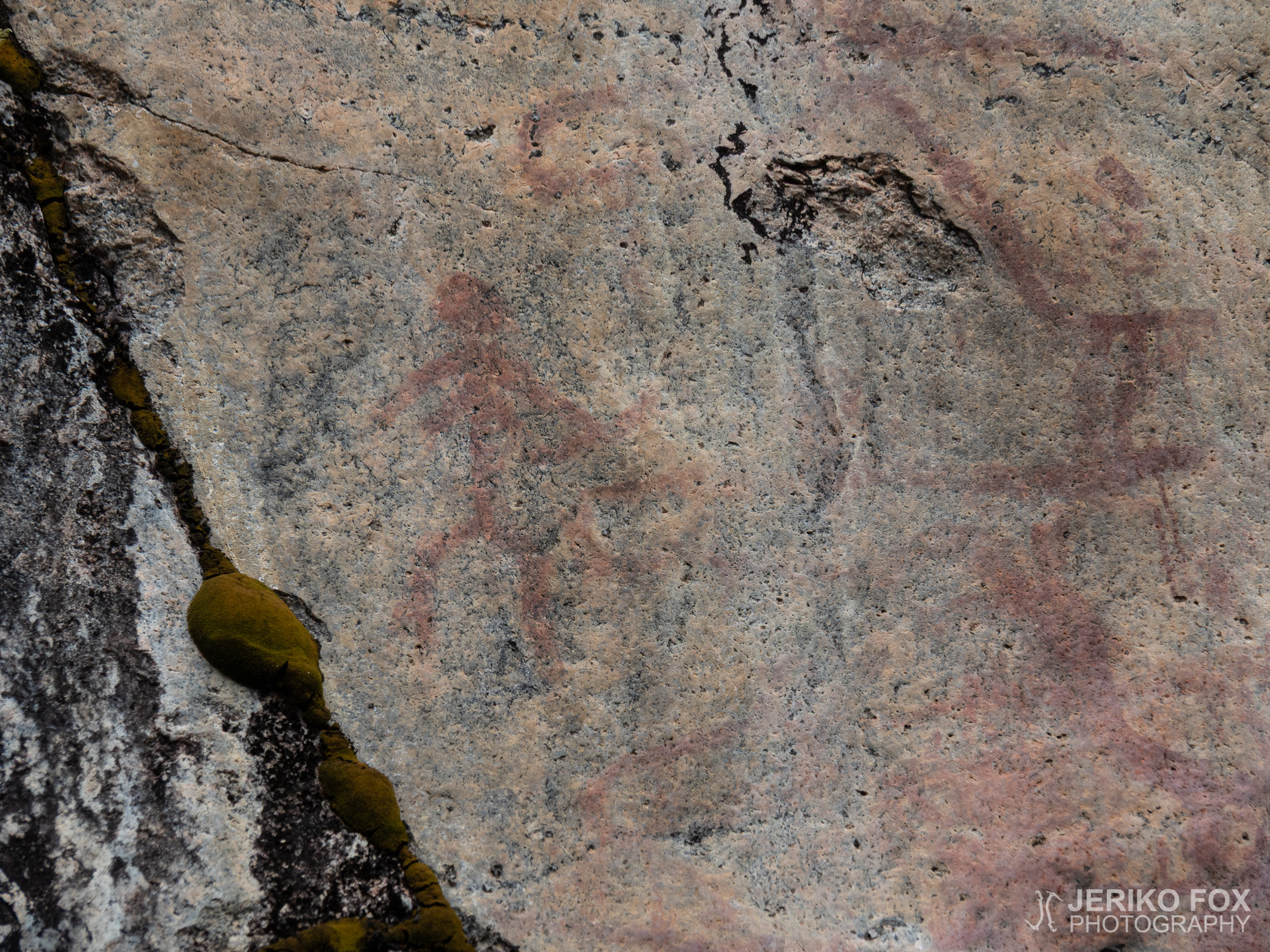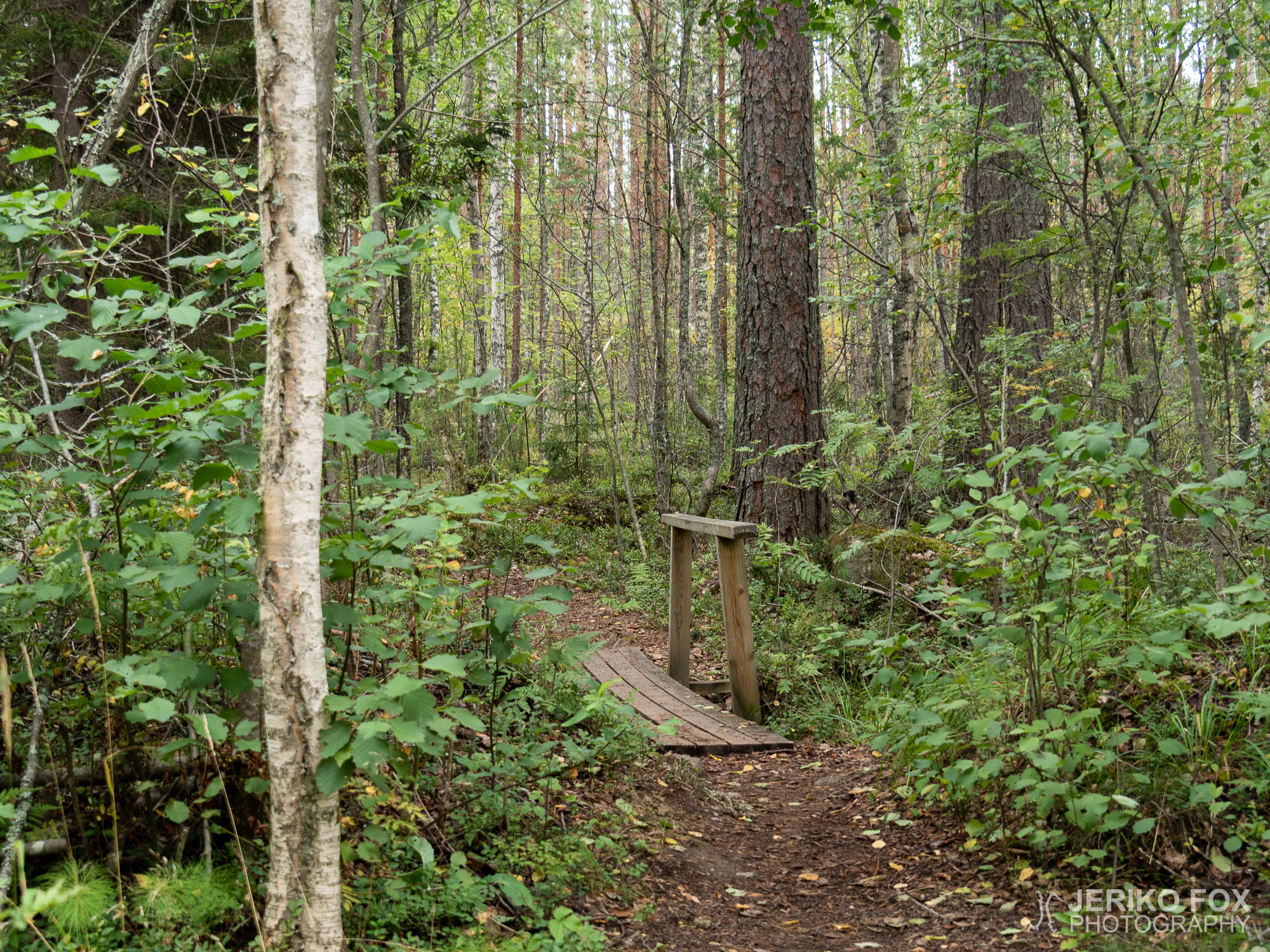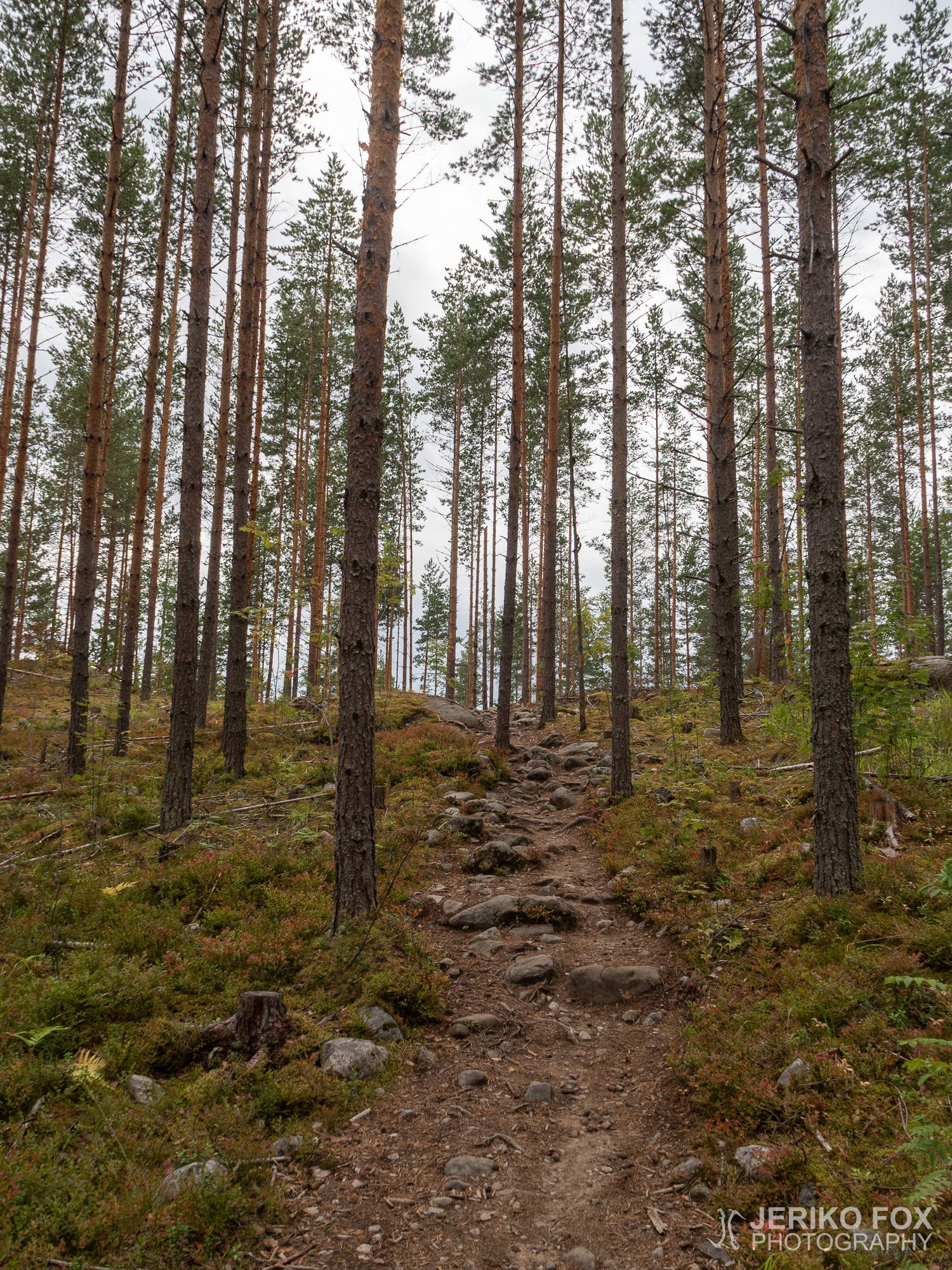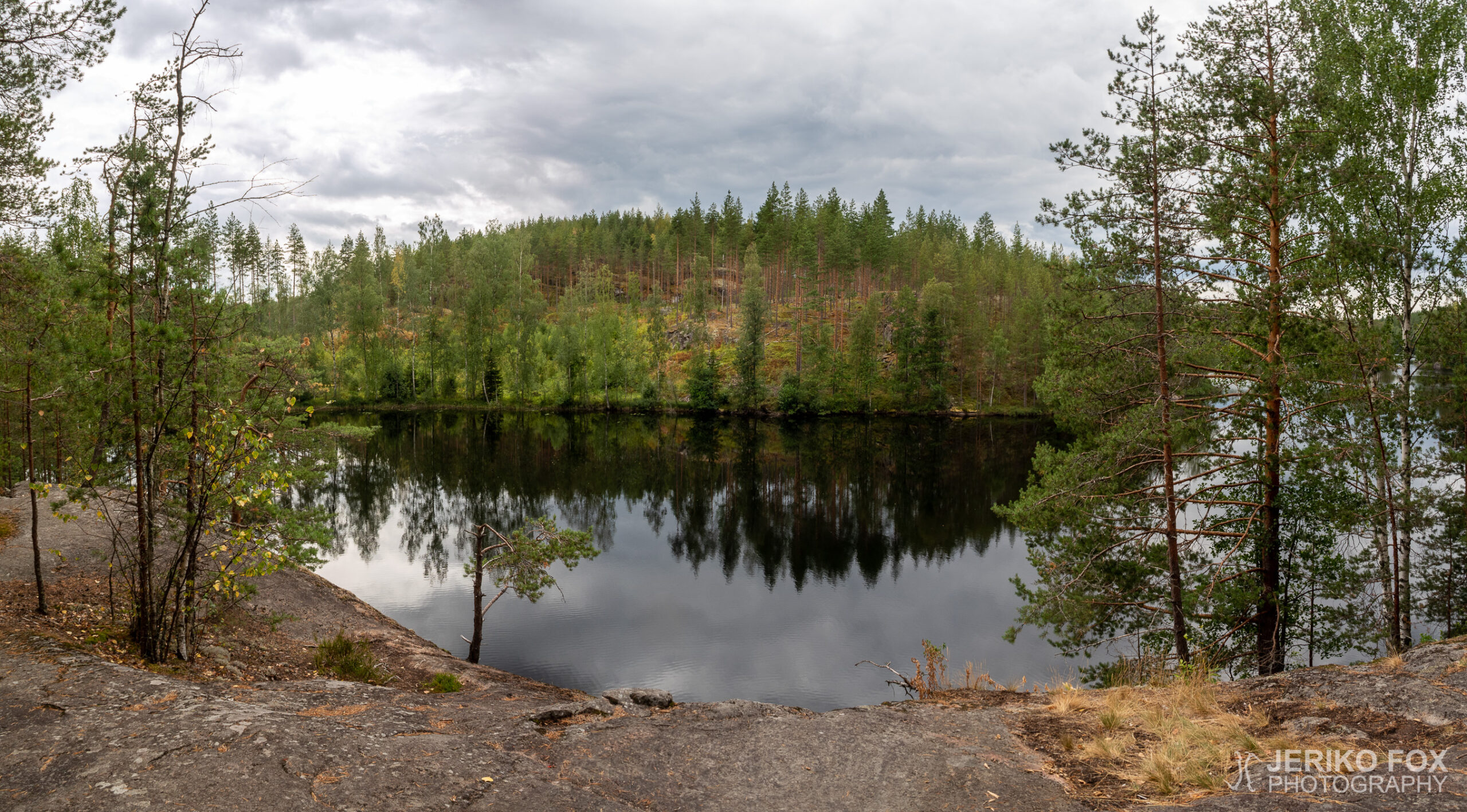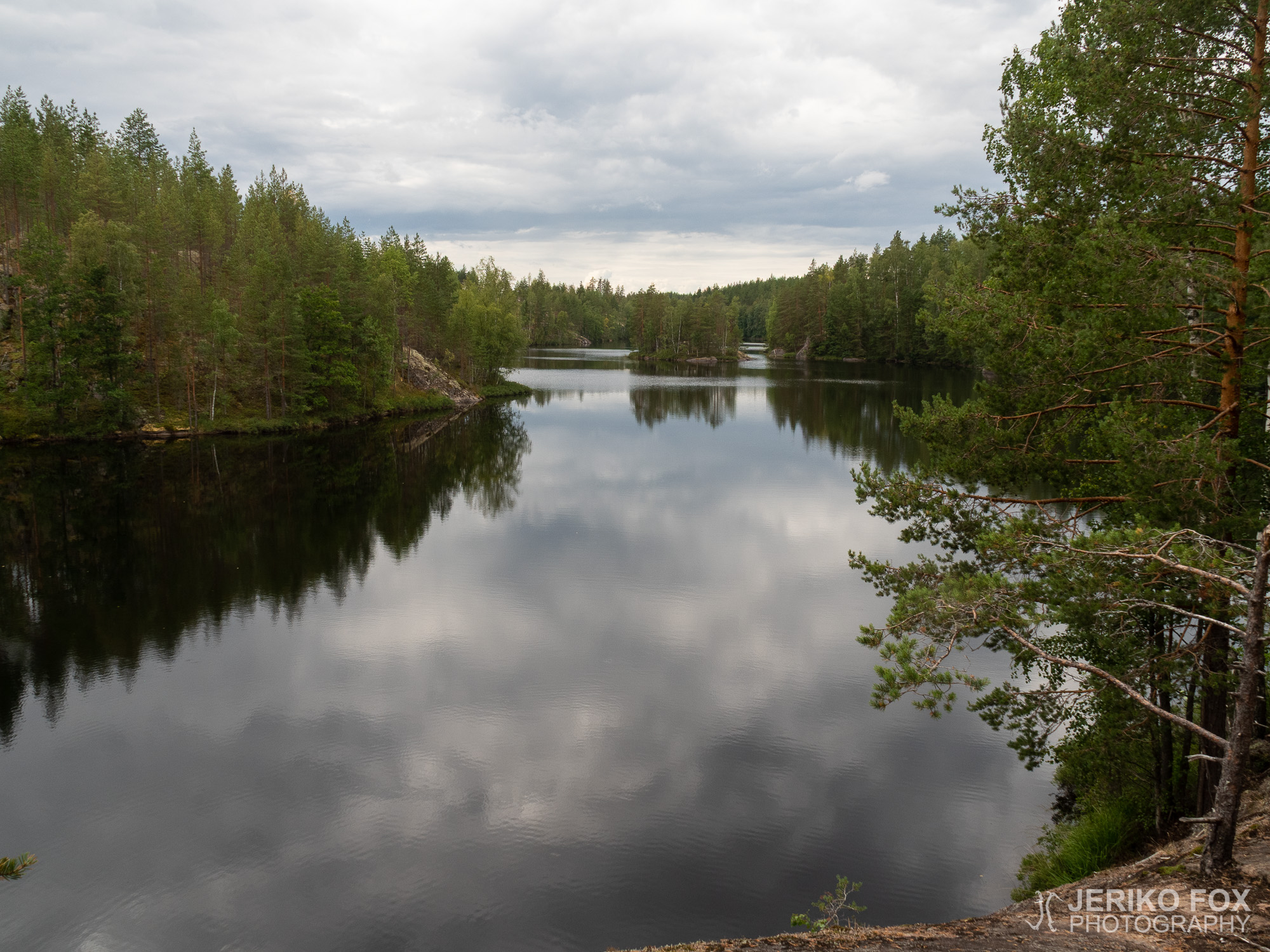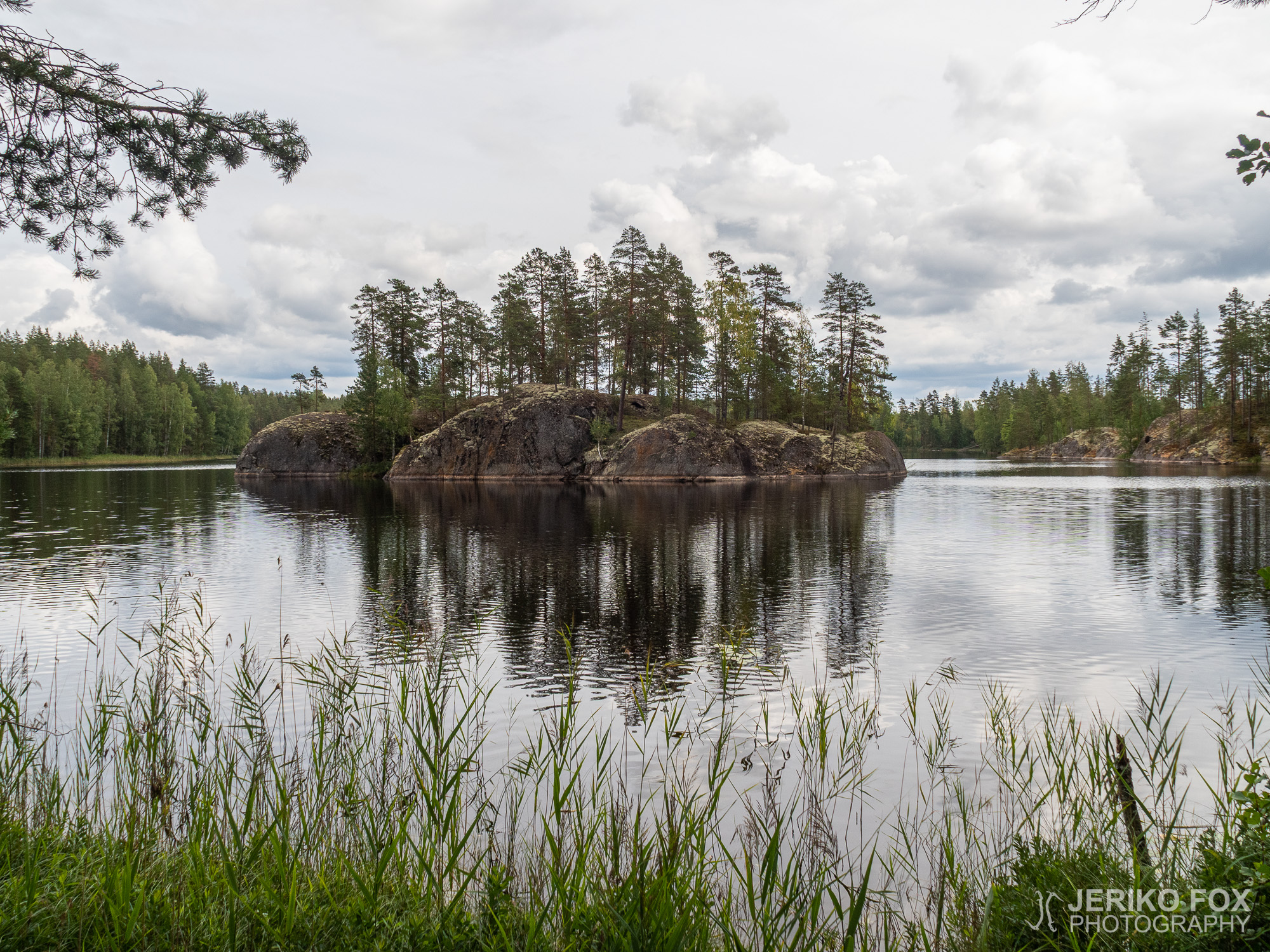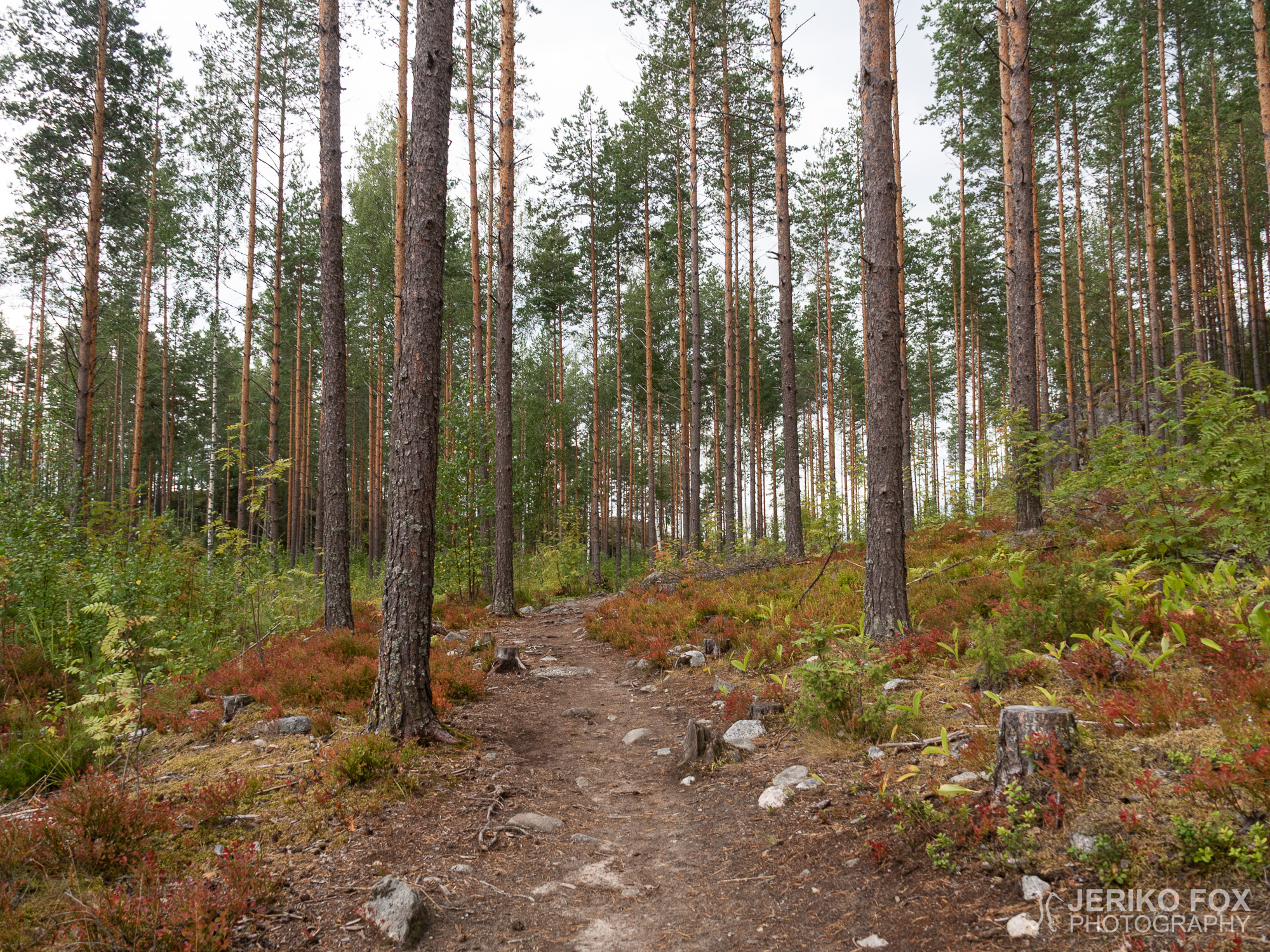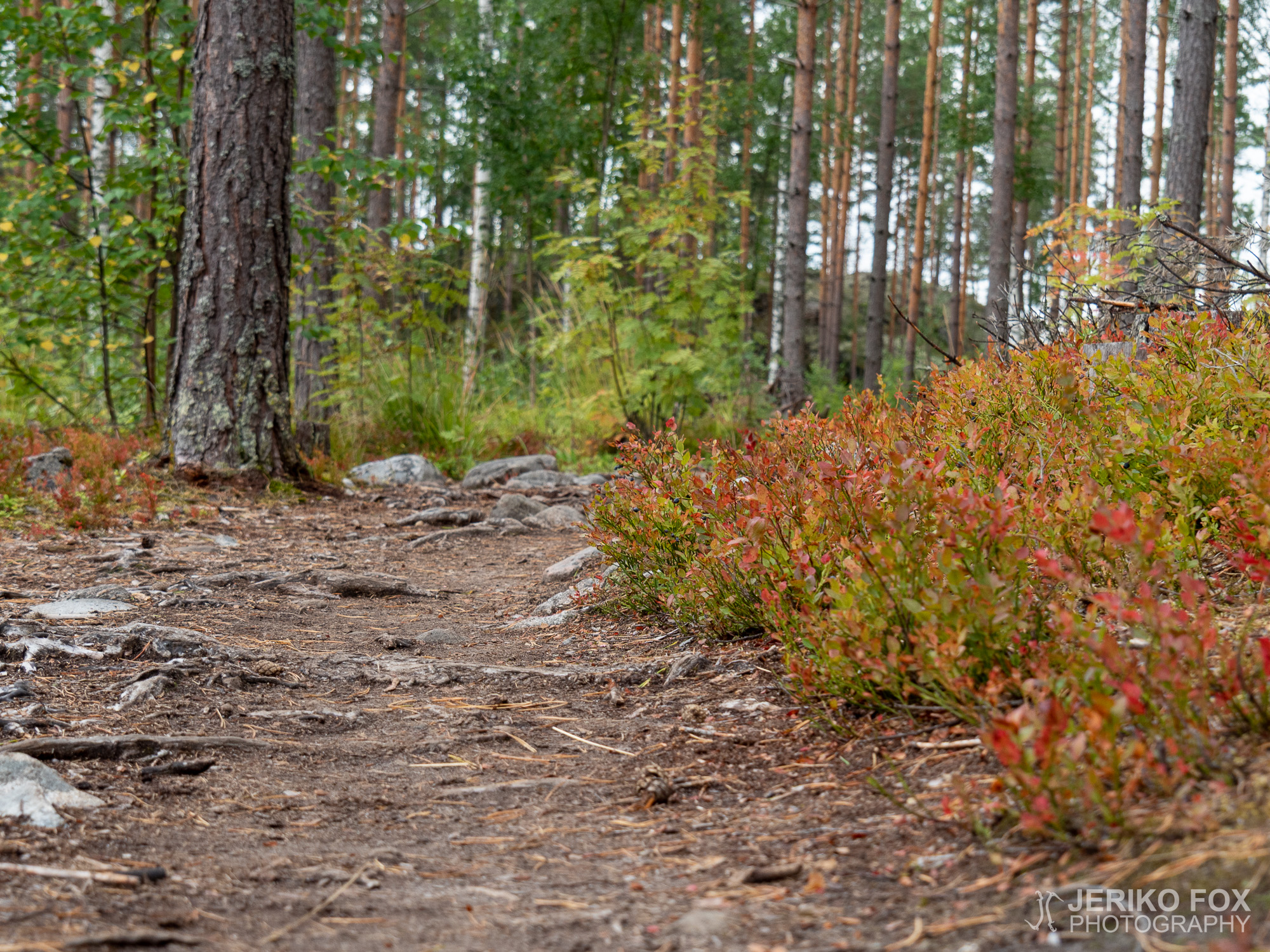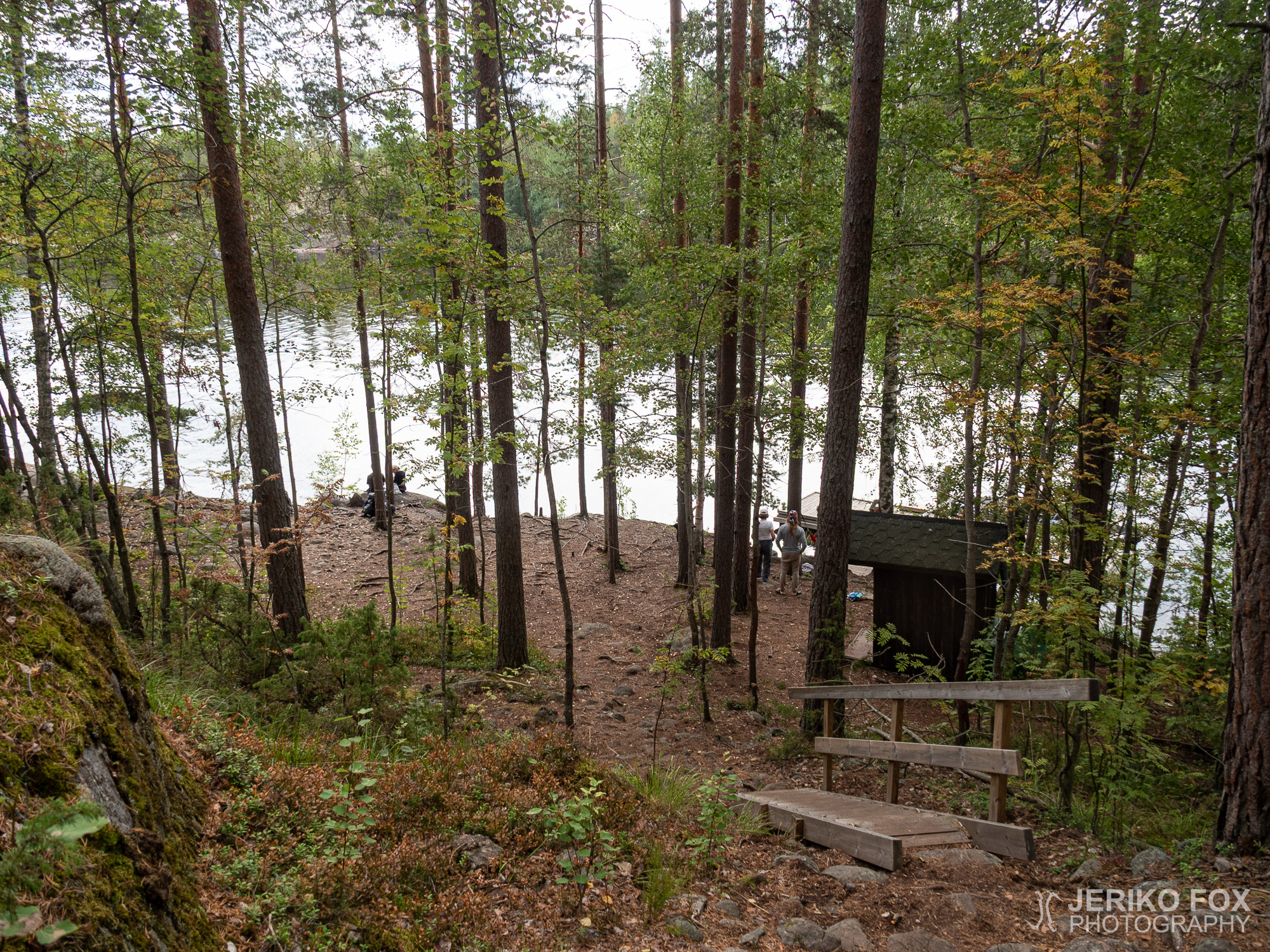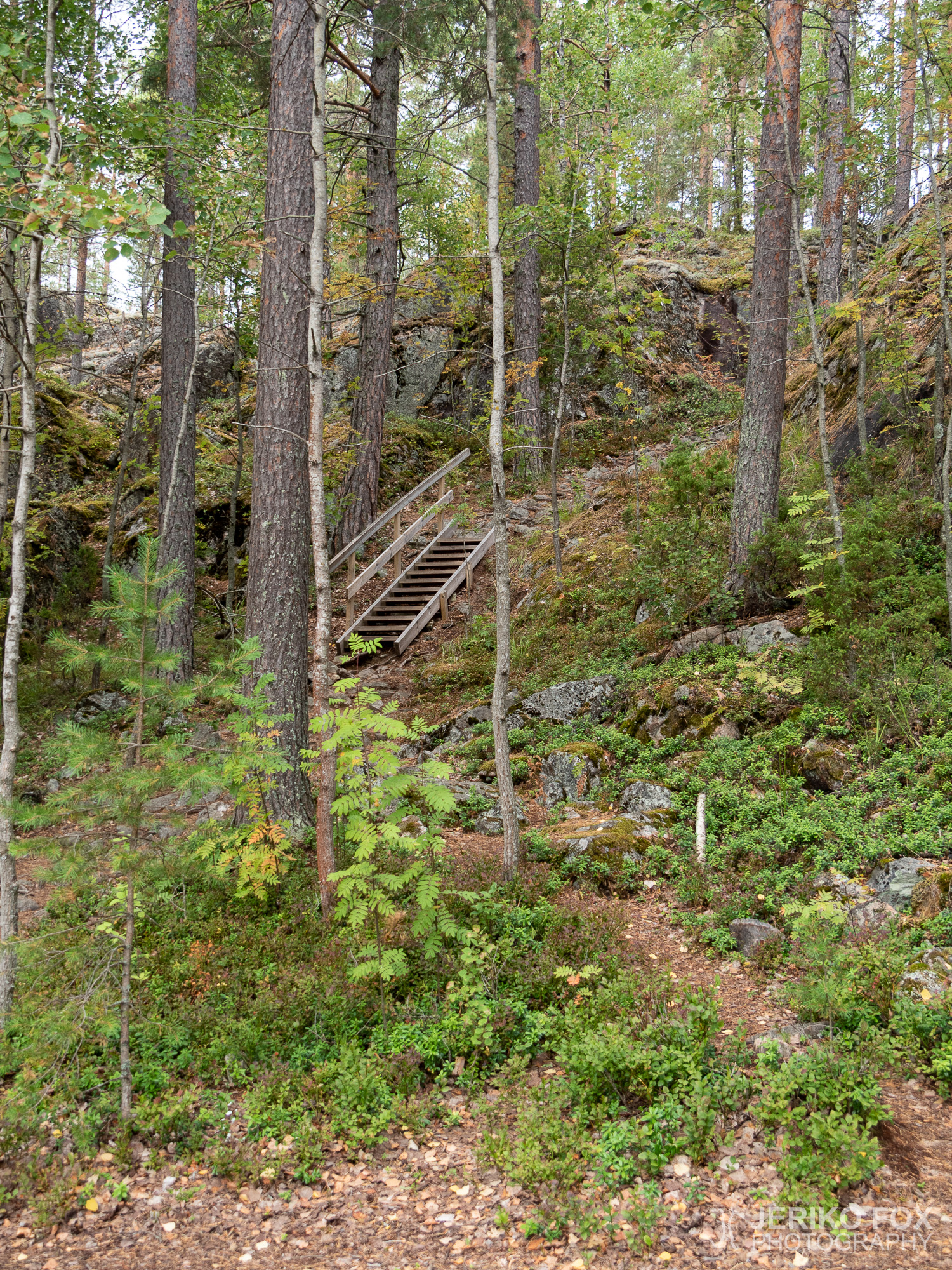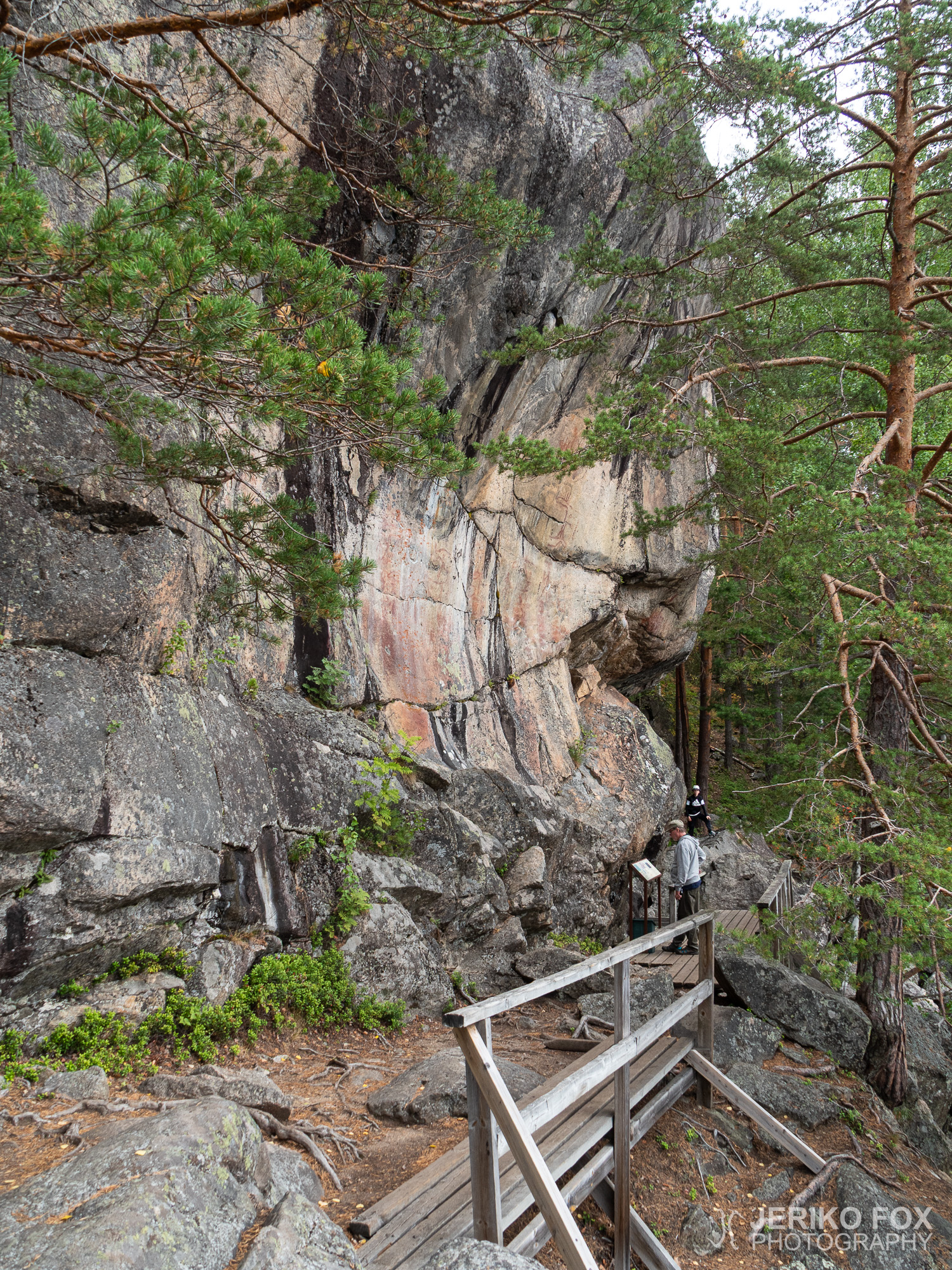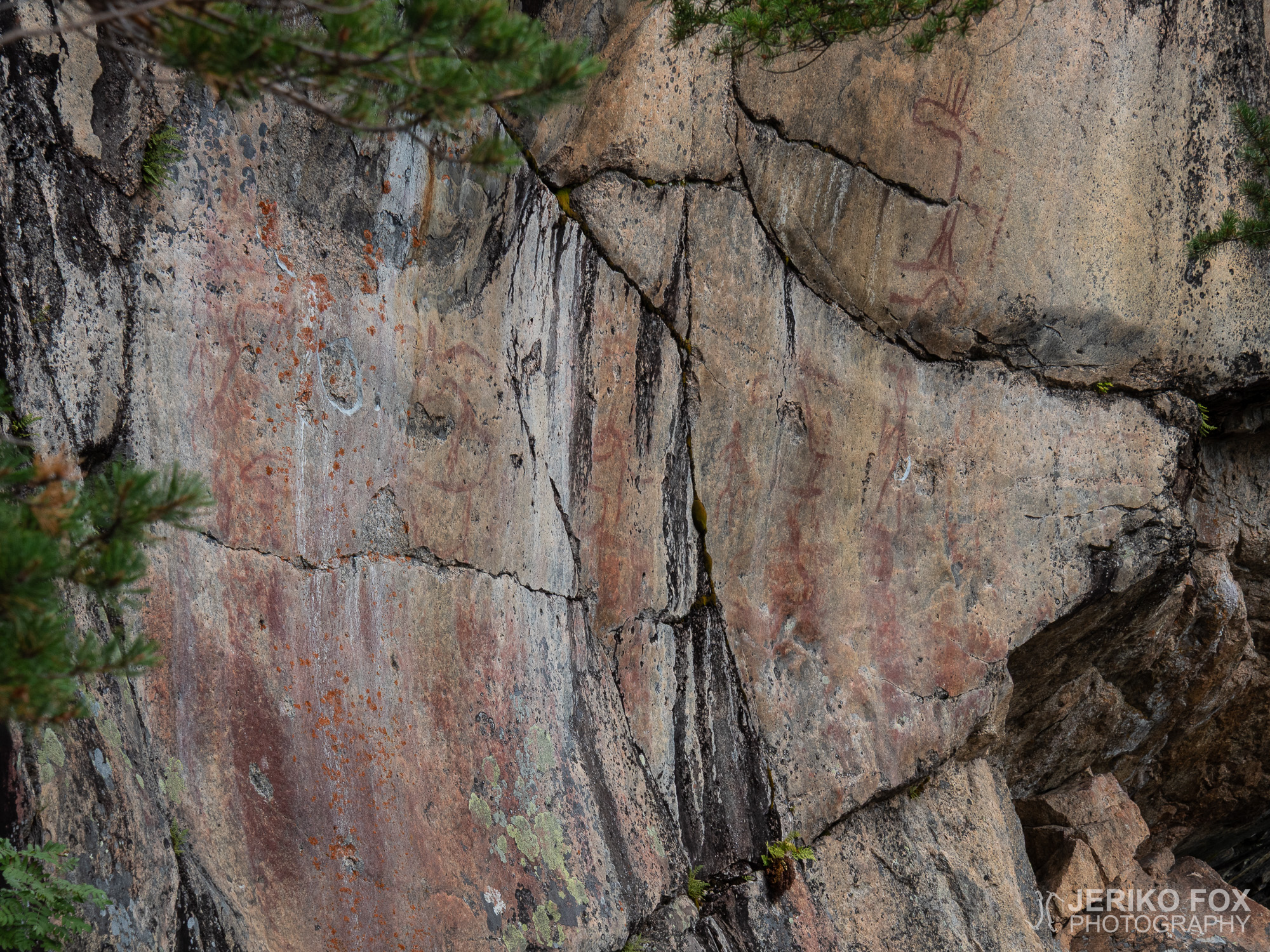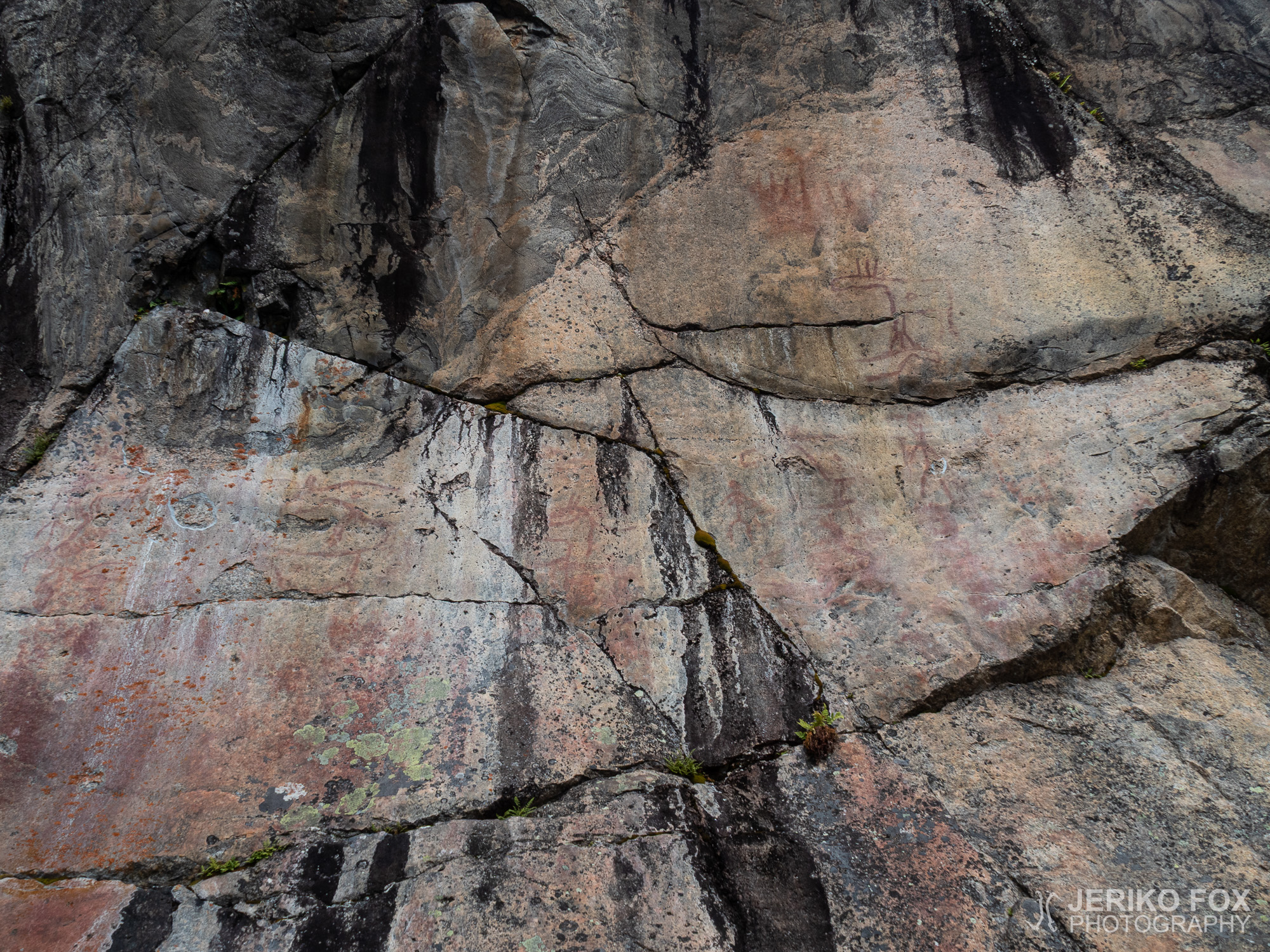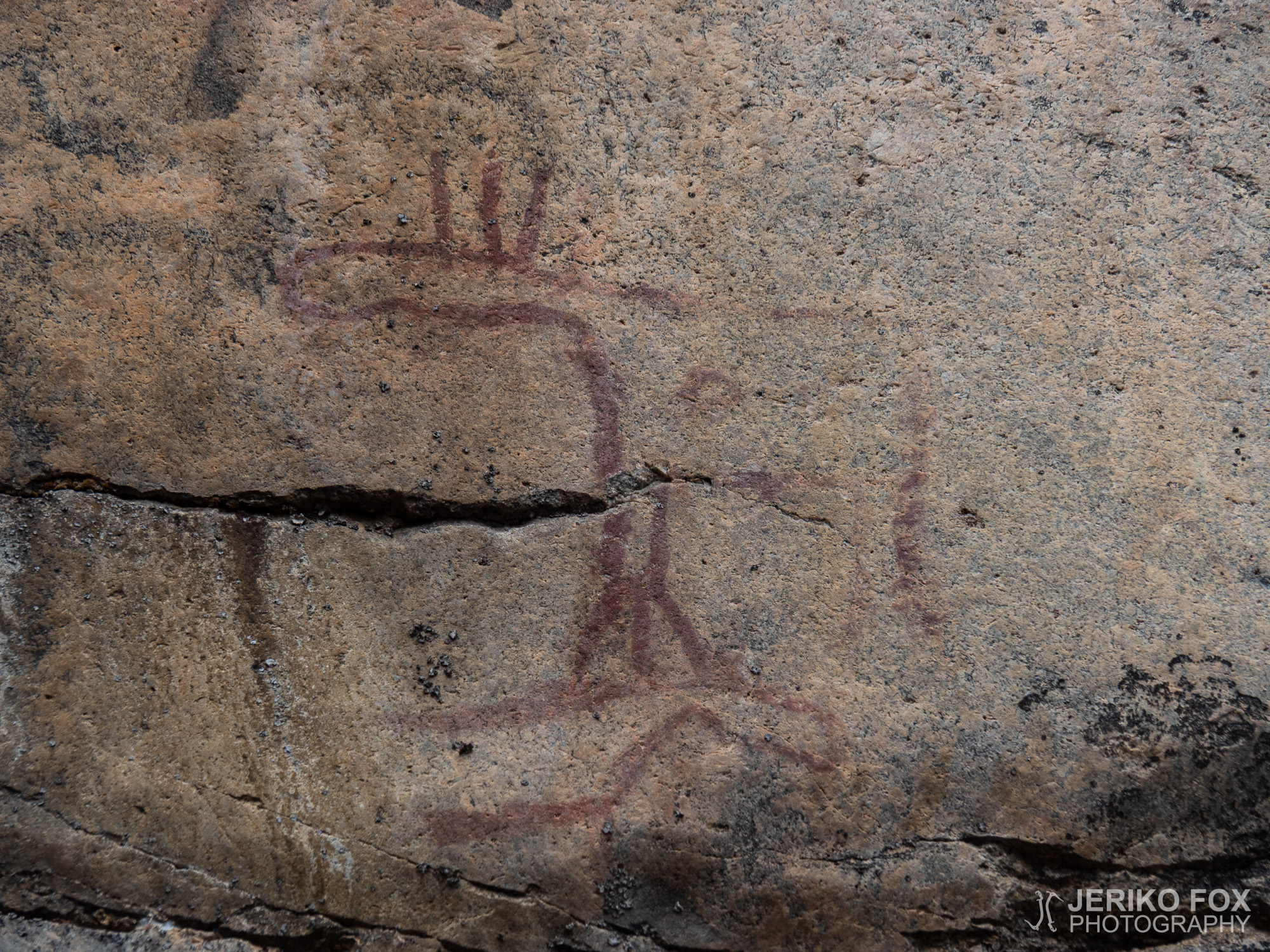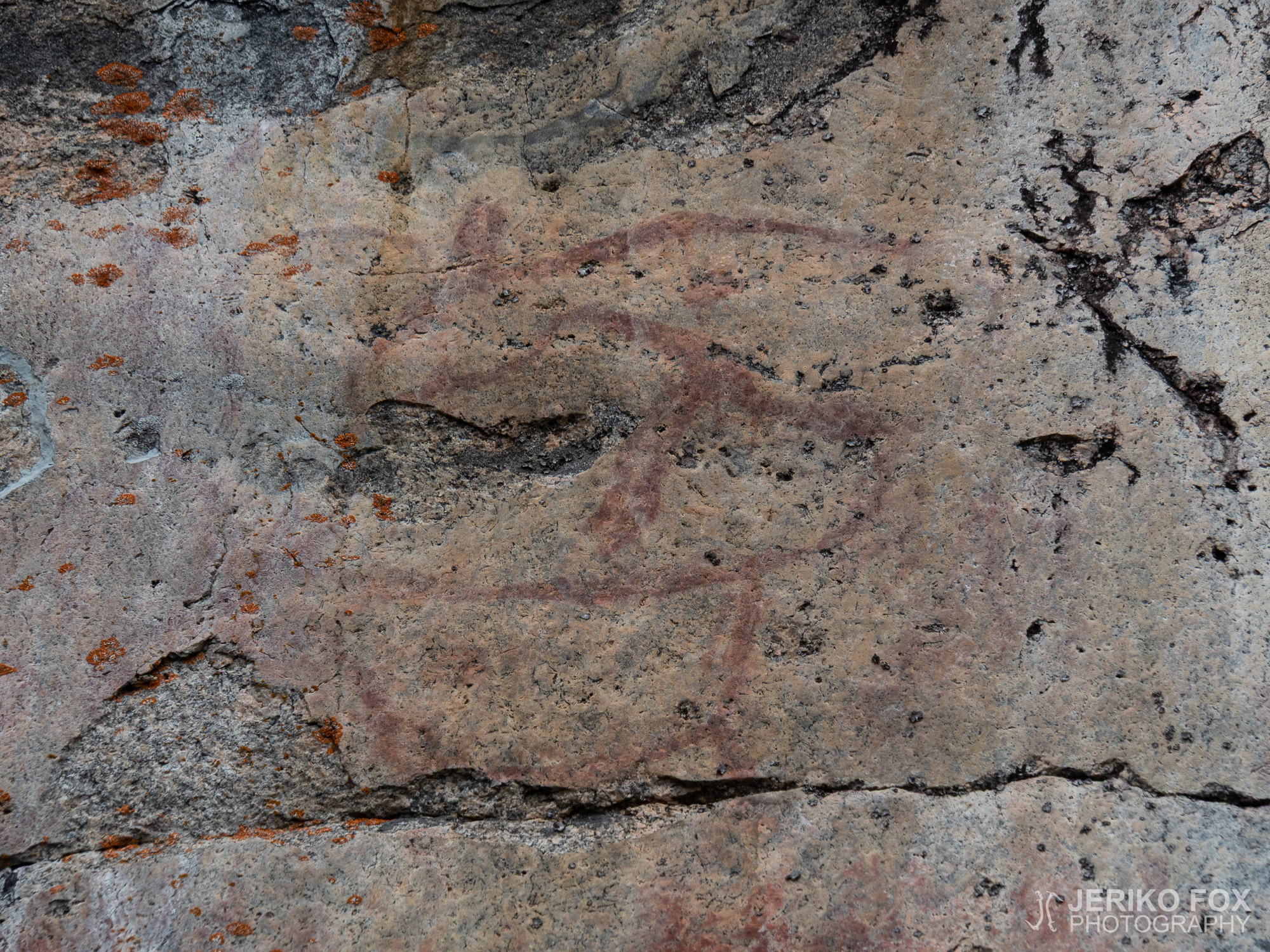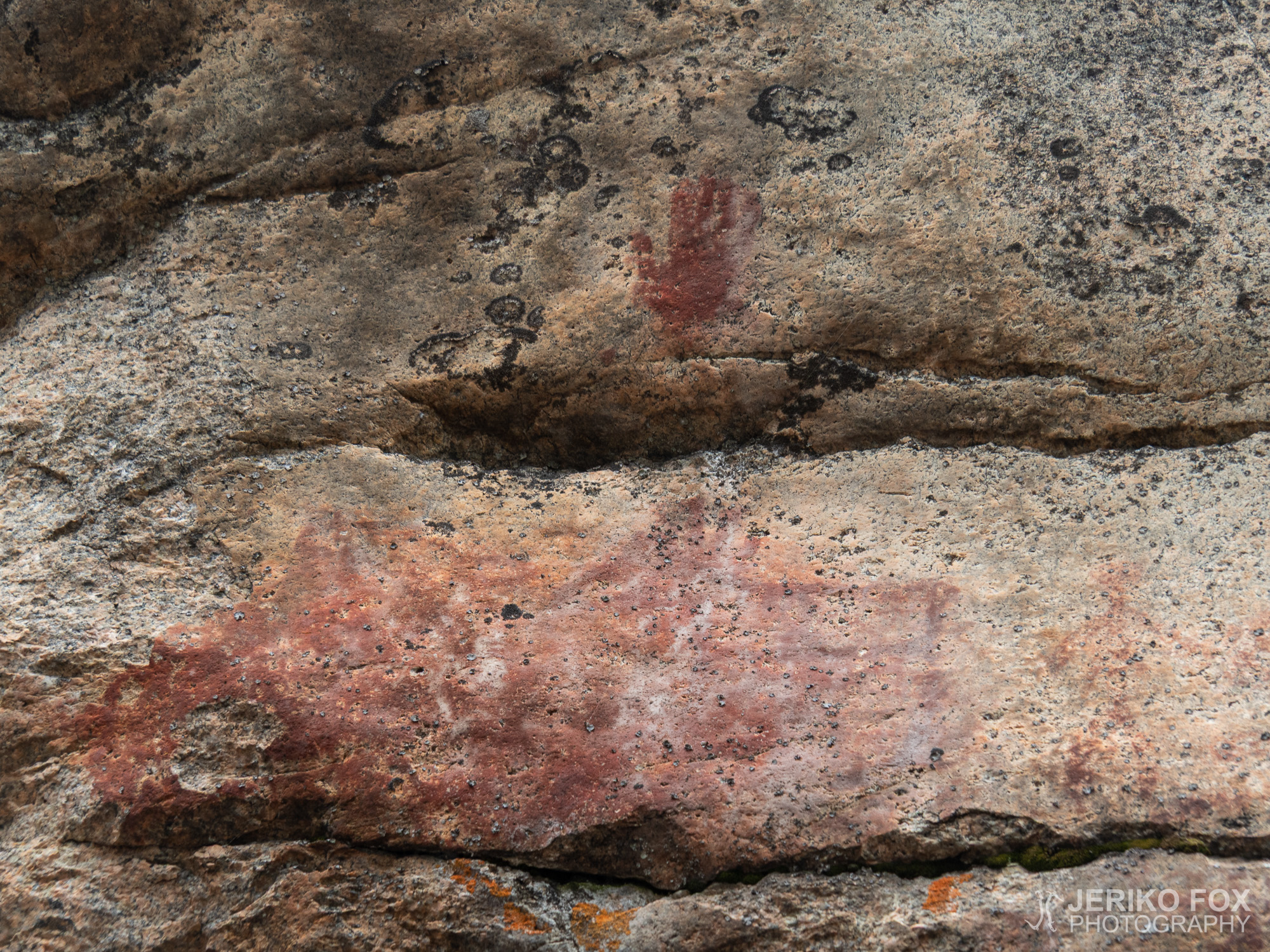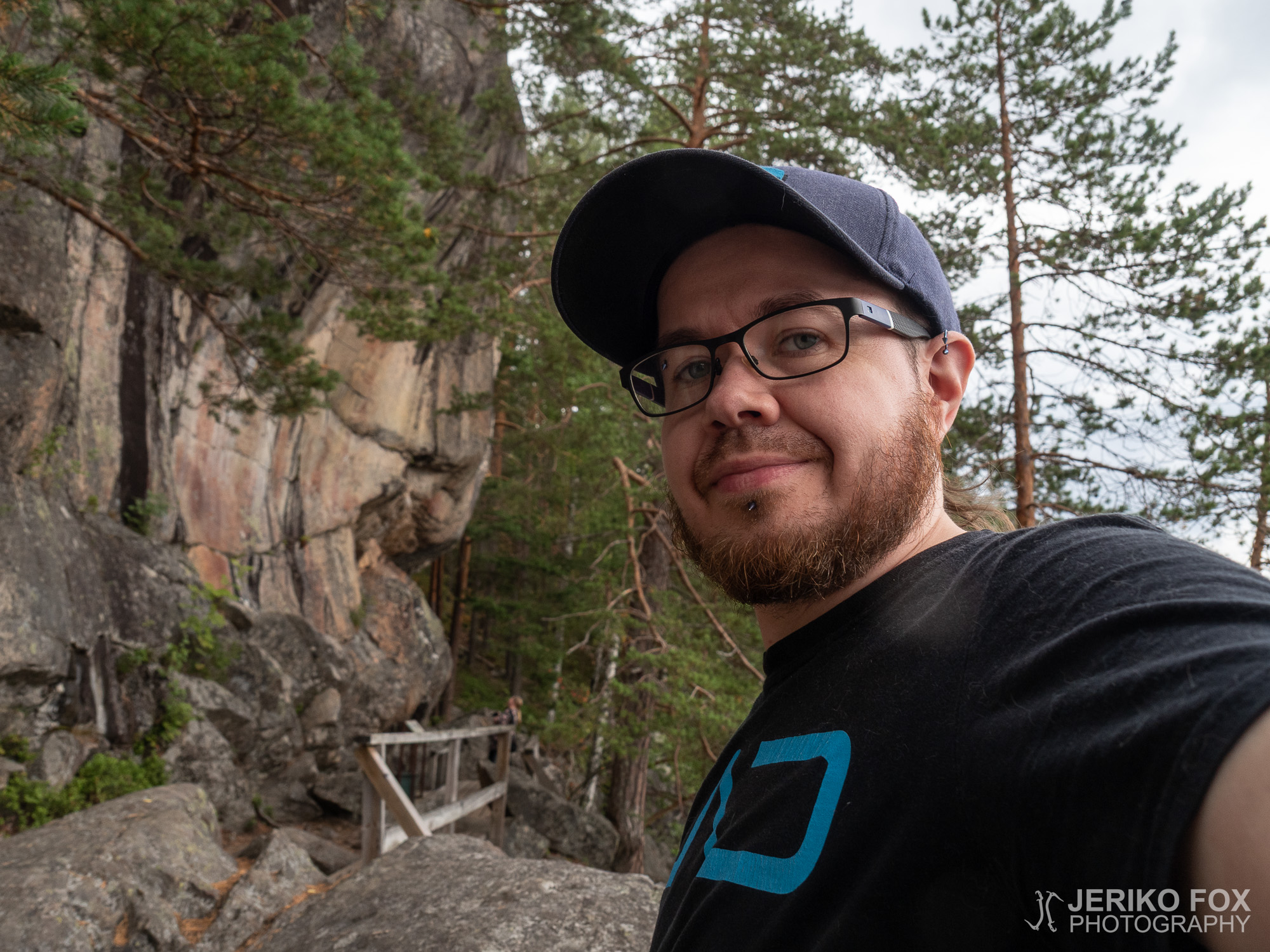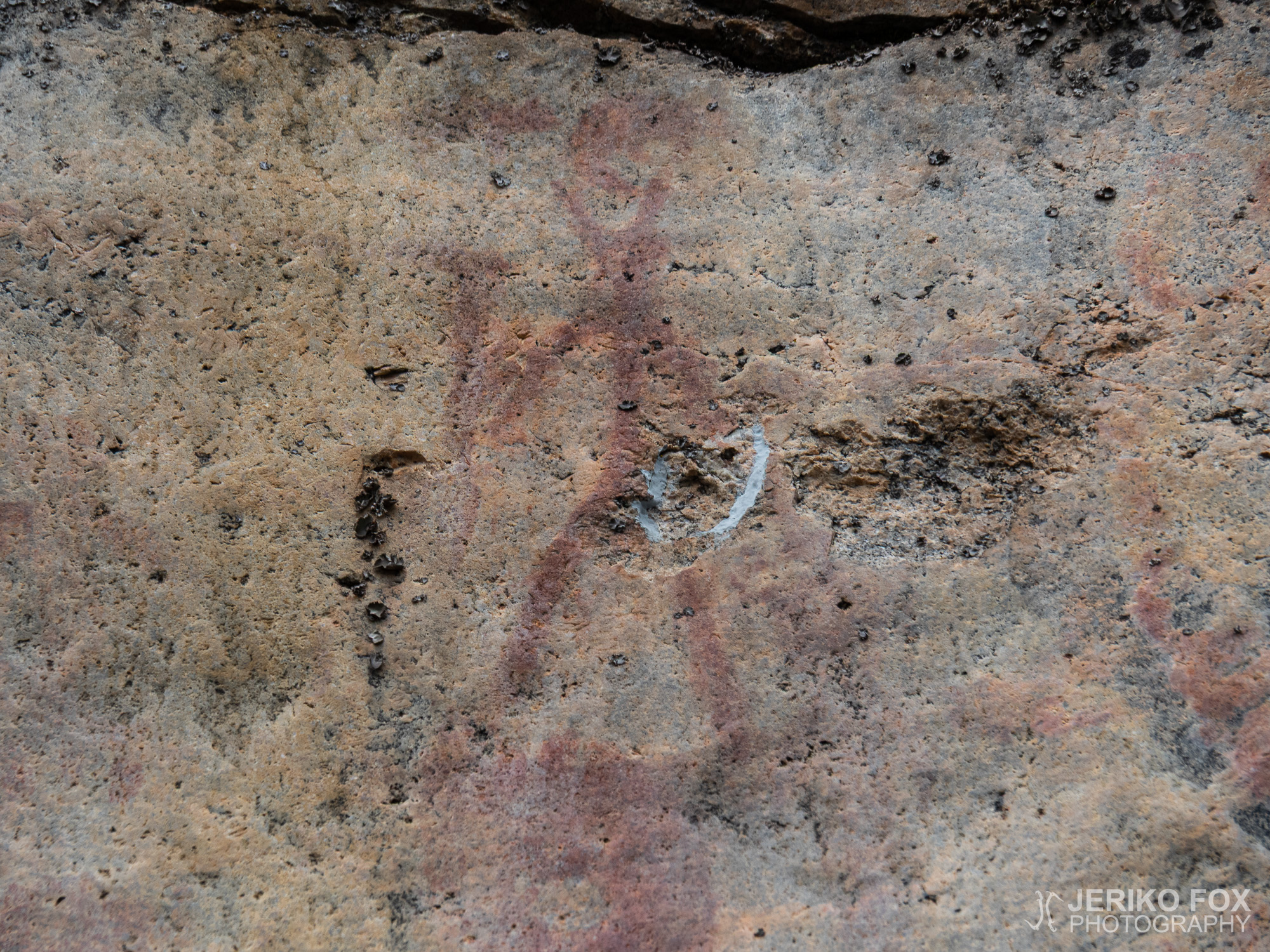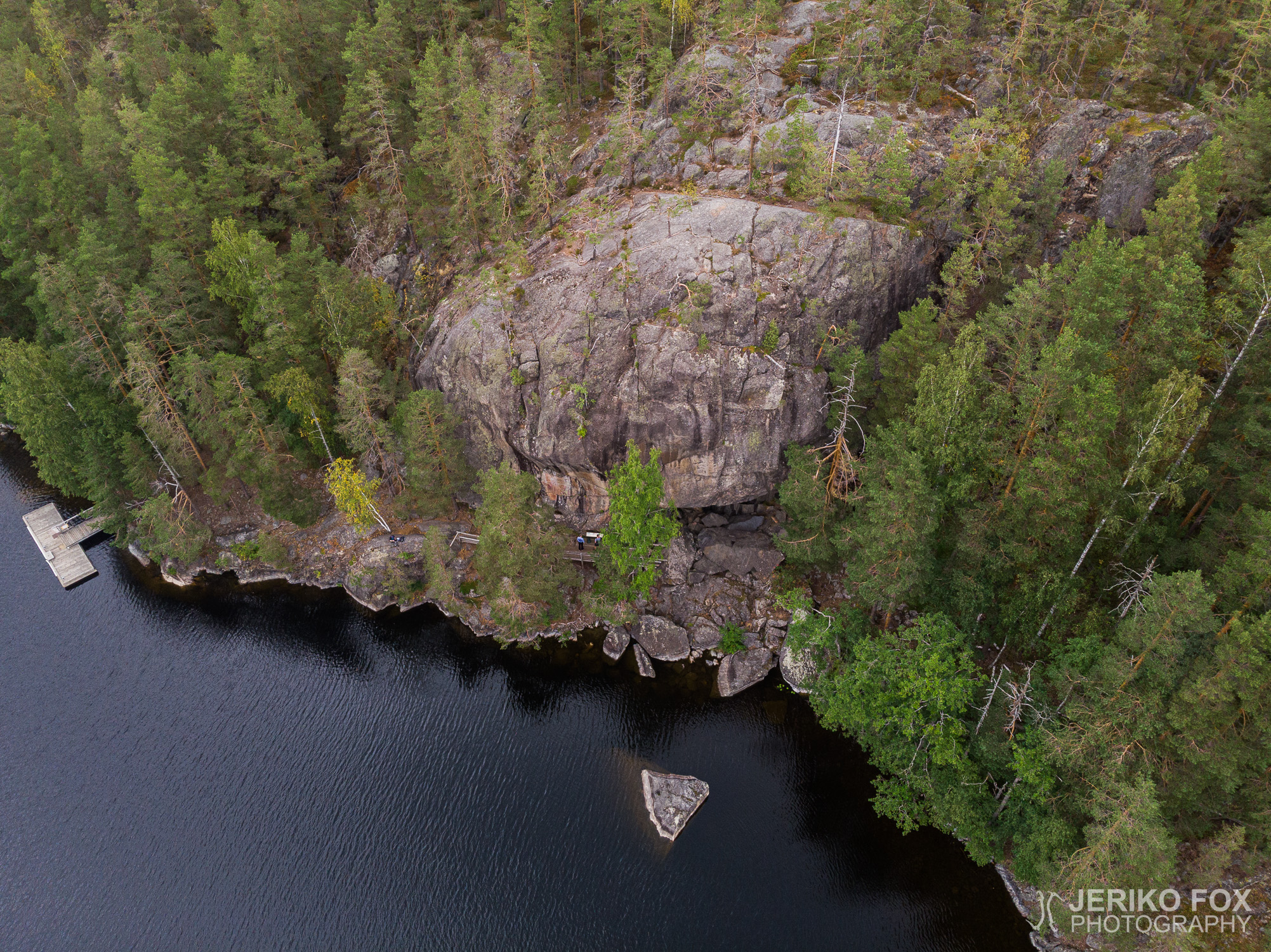When you drive from Lappeenranta to Mikkeli, a bit before you arrive to your destination there is a small village of Ristiina. For many of us it’s just that place where you can fill up you gas tank with a slightly cheaper price while passing by. But if you turn away from the Lappeenrannantie, drive through the village and continue for about 20 km (12 mi), you will end up to a place where there are the most significant prehistoric rock paintings in Finland and all Nordic Countries. At the Astuvansalmi strait there is an exceptionally well preserved set of rock paintings that can be approached by boat or by hiking.
The trail head and the parking lot can be found by navigating to the address Suursalmentie 2040. There is not a lot of space, so it’s essential to be considerate towards others and park your car wisely. The trail is not marked and VisitMikkeli is fear mongering by recommending not to approach by land. I don’t know if that is just a way to promote the commercial cruises, but the trail is in very good condition and it really doesn’t matter that there are no trail signs. The right trail is so obvious. Following the most beaten path you’ll find your way. Of course there are rocks and roots like on any other forest trail.
It takes less than hour to hike the 2,5 km (1.5 mi) trail one way. The trail leads you through the beautiful landscapes of lakes to the Astuvansalmi strait of the Lake Yövesi (lit. Night Water). On the shore rises the majestic rock face, where the paintings are. All the paintings are protected by the law, so although you are free to observe, you may not touch or disturb them by any means.
The rock paintings of Astuvansalmi are dated to 4000-2200 BCE. There are about 80 pictures and most of them portray people, moose and boats. One of the most famous paintings is the “Tellervo of Astuvansalmi” – a unique figure among Finnish rock paintings as a female holding a weapon. The concave form of the rock face has been protecting the paintings from the elements and also allows one to view them in a panoramic way. Some of the paintings are very high up and this is because the water level has been roughly 10 meters (33 ft) higher at the time of painting. When you look at the rock face from the lake, on the right edge you can see a silhouette of a human face. This has been interpreted as contributing to the sacred nature of the location.
Astuvansalmi is rather remote, but well worth visiting. Rarely you may hike into a place that offers this kind of connection to our ancient ancestors. Hopeless romantics may also draw connections to the Cave of Swimmers in Gilf el-Kebir plateau in Egypt that was made popular by the book and the film the English Patient. Both allows you to abide in the captivating mystery of the rock paintings – because now after thousands of years have passed, we can only reach some hazy interpretations of their messages.
Kun ajaa Lappeenrannasta Mikkeliin, on hieman ennen Mikkeliä pieni Ristiinan kylä, joka on monelle meistä lähinnä hieman edullisempi paikka tankata auto ohikulkumatkalla. Jos kuitenkin kääntyy Lappeenrannantieltä Ristiinaan, ajaa kylän läpi ja jatkaa noin 20 km pääsee paikkaan, josta löytyy koko Suomen ja Pohjoismaidenkin laajimmat esihistorialliset kalliomaalaukset. Ristiinan Astuvansalmella on poikkeuksellisen hyvin säilynyt sarja kalliomaalauksia, joita voi lähestyä joko vesiteitse tai maata pitkin vaeltamalla.
Astuvansalmen polun parkkipaikka löytyy osoitteesta Suursalmentie 2040. Tilaa ei ole valtavasti, joten auto kannattaa sijoitella huomaavaisesti muita kohteeseen tulijoita ajatellen. Polku ei ole merkitty ja VisitMikkeli peloittelee sen huonokuntoisuudella jopa siinä määrin ettei suosittele lähestymistä maata pitkin. En tiedä onko tämä markkinointistrategia risteilyille, mutta polku on oikein hyvässä kunnossa ja merkkien puuttuminen ei haittaa, koska reitti on todella selvä. Leveintä polkua seuraamalla löytää perille. Kiviä ja juurakkoa on, mutta niitä nyt on yleensäkin metsäpoluilla.
Noin 2,5 km pituisen polun kulkee vajaassa tunnissa yhteen suuntaan. Polku johdattelee järvimaisemien läpi Yöveden Astuvansalmelle, jonka rannassa kohoaa majesteettinen kallio. Maalaukset ovat järven puoleisessa seinämässä. Ne on suojeltu muinaismuistolain nojalla, joten niitä saa vapaasti katsella, mutta ei kosketella tai muuten vahingoittaa.
Astuvansalmen kalliomaalaukset on ajoitettu maalatuiksi 4000-2200 eaa. Kuvia on noin 80 ja monet niistä esittävät ihmisiä, hirviä ja veneitä. Yksi tunnetuimpia Astuvansalmen maalauksia on niin sanottu Astuvansalmen Tellervo – Suomessa ainutlaatuinen asetta kantava naishahmo. Kallion kovera muoto on suojellut maalauksia ja sallii myös niitä ihasteltavan eräänlaisena panoraamana. Osa maalauksista on hyvin korkealla ja tämä johtuu siitä, että veden pinta on ollut noiden maalausten tekoaikaan noin 10 m korkeammalla. Järveltä katsottuna kallion oikeassa laidassa on ihmiskasvojen profiili ja tämän on tulkittu vaikuttaneen paikan pyhään luonteeseen.
Astuvansalmi on melko syrjäisessä paikassa, mutta se on ehdottomasti käymisen arvoinen kohde. Harvassa luontokohteessa voi kokea näin selvän yhteyden johonkin hyvin ikiaikaiseen. Toivottomille romantikoille voi myös piirtyä yhteyksiä Egyptissä Gilf el-Kebirin ylängöllä sijaitsevaan uimareiden luolaan, joka tuli laajalle yleisölle tutuksi kirjasta ja elokuvasta Englantilainen potilas. Molempien kohdalla on herkullista tunnelmoida kalliomaalausten mysteerin äärellä, koska näin tuhansien vuosien jälkeen voimme saavuttaa vain utuisia tulkintoja niiden sanomasta.
Max elevation: 102 m
Total time: 02:33:05

